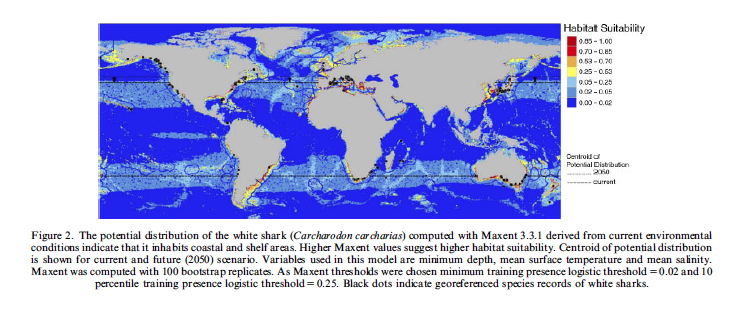Dambach, Johannes, and Dennis Rödder. “Applications and future challenges in marine species distribution modeling.” Aquatic Conservation: Marine and Freshwater Ecosystems 21.1 (2011): 92-100.
This study highlights how the effects of climate change are altering marine species distributions and also highlights challenges unique to marine species distribution modeling. Researchers posit that increasing ocean temperatures will force species to shift either in latitude or depth with accompanied tradeoffs with respect to the selected shift. As a consequence invasions and local/global extinctions are expected to continue to increase.
Authors provide three points highlighting unique challenges within marine species distribution modeling. First, authors consider how complex three dimensional structure generates the need to understand how depth influences contributing factors. Related to the three dimensional complexity issues is that preference in depth can differ depending on the life stage of the species in question (eg: larval and adult stages). One possible solution is to apply species distribution models at varying stages of depth, then layer predictions appropriately. Second, dispersal via ocean currents is a significant driver of many marine in some instances more important than local physical properties themselves. Lastly, there exists a known bias in occurrence records between coastal and open water surveys. Which can complicate knowledge of habitat preference for species that occupy both at some point in their life cycles.
This paper also presents a case study on great white sharks, Carcharodon carcharias, habitat suitability. The great white shark is a suitable organism to model due to its known global migration patterns. White shark occurrence records were accessed through GBIF. Environmental parameters considered were the following: minimum depth, sea-surface temperature, and salinity. Researchers used MaxEnt and a Last Glacial Maximum output to determine how white shark distribution could change under climate change. Outputs suggest that white sharks are more likely to adjust their distributions to increased latitudes in the future due to changes in environmental conditions. Given that the white shark is an apex predator this could further create consequences for other animals currently occupying the predicted expansion areas.

